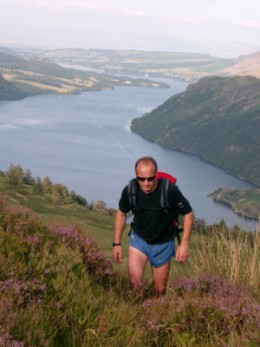Why test at All?
It is dangerously nonsensical to supply relatively unproven equipment to mountaineering
expeditions when the lives of the members could well depend on its performance under stress.
And yet some outdoor equipment manufacturing companies have been doing just that - and kidding
themselves that they're getting a cheap testing service at the same time
Ken Ledward recognised the dangers in such practices in 1978 when he re-ignited an early
ambition and founded KLETS, the equipment testing and staff training programme that has
revolutionised clothing and hardware development throughout the international outdoor
leisure industry.
Based on the simple premise that controlled test usage and highly focused report-back
is the best way to give value, the KLETS team guarantee that every detail of the product
under development will be examined for function, strength and "useability", before it's
connected to the mobile test package. Then it'll be given a physical performance check
that condenses years of normal use into as many months and shows up the lumps, bumps and
thin bits long before an end-user gets anywhere near it. The whole is a match of science
and rough stuff that isn't available from any other source.
Field test or Lab test?
KLETS recommend a combined approach to these two disciplines as they both give half of
the overall picture of product performance. It is relatively easy to get a result for
fabric breathability in the lab and this gives the designer good information with which to
base their decision of fabric choice but is is extremely difficult to test the entire garment
for breathability in the lab.
To this end KLETS is linked with the School of Textile Industries at the University of Leeds
in a joint development programme to produce an ultra-lightweight sensor system for use in
clothing and footwear performance assessment. As a result we can now measure and record a testers
heart rate, skin temperature and perspiration levels; the temperature and humidity between the
layers of clothing; and the ambient temperature, humidity and wind-speed.
All the results are downloaded onto a laptop at the end of each session and subsequently
incorporated into our test reports.

